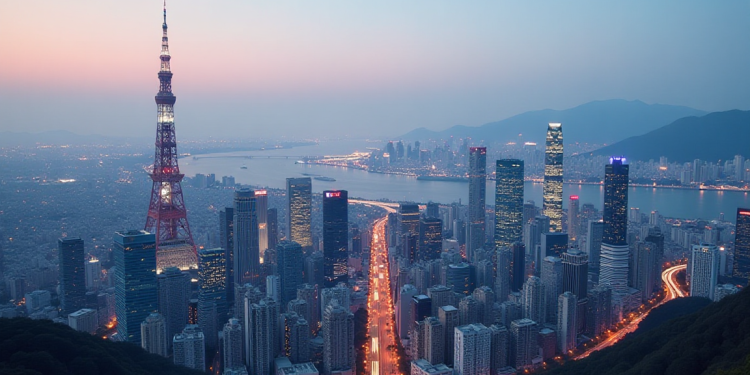South Korea’s KOSPI Index has been in a strong uptrend this year, helped by the country’s president’s commitment to push it to KRW 5,000 earlier this year. It jumped to a record high of KRW 4,244, up by 86% from its lowest level this year. This rally could be about to end after the index formed a risky pattern.
KOSPI Index technicals points to a pullback as the euphoria ends
The daily timeframe chart shows that the KOSPI Index has pulled back from the year-to-date high of KRW 4,245 to the current KRW 3,853.
It has formed a few risky patterns that points to a retreat in the near term. The most important is the double-top pattern it formed at KRW 4,200 and whose neckline was at KRW 3,867. A double-top is one of the most popular bearish reversal chart pattern in technical analysis.
The index has also formed a bearish divergence pattern as the Relative Strength Index (RSI) and the Percentage Price Oscillator (PPO) have continued falling in the past few weeks.
At the same time, the index remains much higher than the 100-day and 200-day Exponential Moving Averages (EMA), which are at KRW 3,512 and KRW 3,210. Therefore, the index may be at risk of a bearish reversal in a process known as mean reversion, where an asset moves back to its historical averages.
Therefore, there is a risk that the index will pull back and retest the important support level at KRW 3,500, which is about 9% below the current level.
Why the blue-chip South Korean index has jumped
There are a few reasons why the KOSPI Index has surged this year. First, the surge was sparked by a statement by President Lee Jae Myung who pledged to move it to KRW 5,000 earlier this year. That was an ambitious pledge as the index was trading at KRW 2,400 at the time.
Second, the index jumped after the United States and South Korea reached a trade deal a few months ago. That deal lowered the tariff that the country pays total US to 15%, much lower than what Trump had threatened before. Since then, South Korean goods shipped to the US have dropped at a lower pace than expected.
Third, the KOSPI Index has soared because of the ongoing artificial intelligence boom as some of its companies are big suppliers to the industry. This includes top companies like SK Hynix and Samsung, which have published strong results this year as demand jumped.
Meanwhile, there is the perception that South Korean companies are trading at a discount compared to their global peers. For example, despite the ongoing surge, the KOSPI Index still has a PE ratio of 13, much lower than the S&P 500 Index’s 22.
At the same time, the country is working on measures to make South Korean companies more attractive, including the recently passed Commercial Act that will reduce taxes and regulations.
Still, there are risks to the surge, especially as the fears of an AI bubble rise. A slowdown in AI spending would have a negative impact on some of the biggest companies in the industry.
Another risk is that leverage has jumped in the past few months. Data shows that margin trading jumped to $17 billion this month, up by 50% in the last six months. As we saw in the crypto industry, extreme use of leverage could lead to substantial pain.
The post Here’s why South Korea’s KOSPI Index may retreat soon appeared first on Invezz













